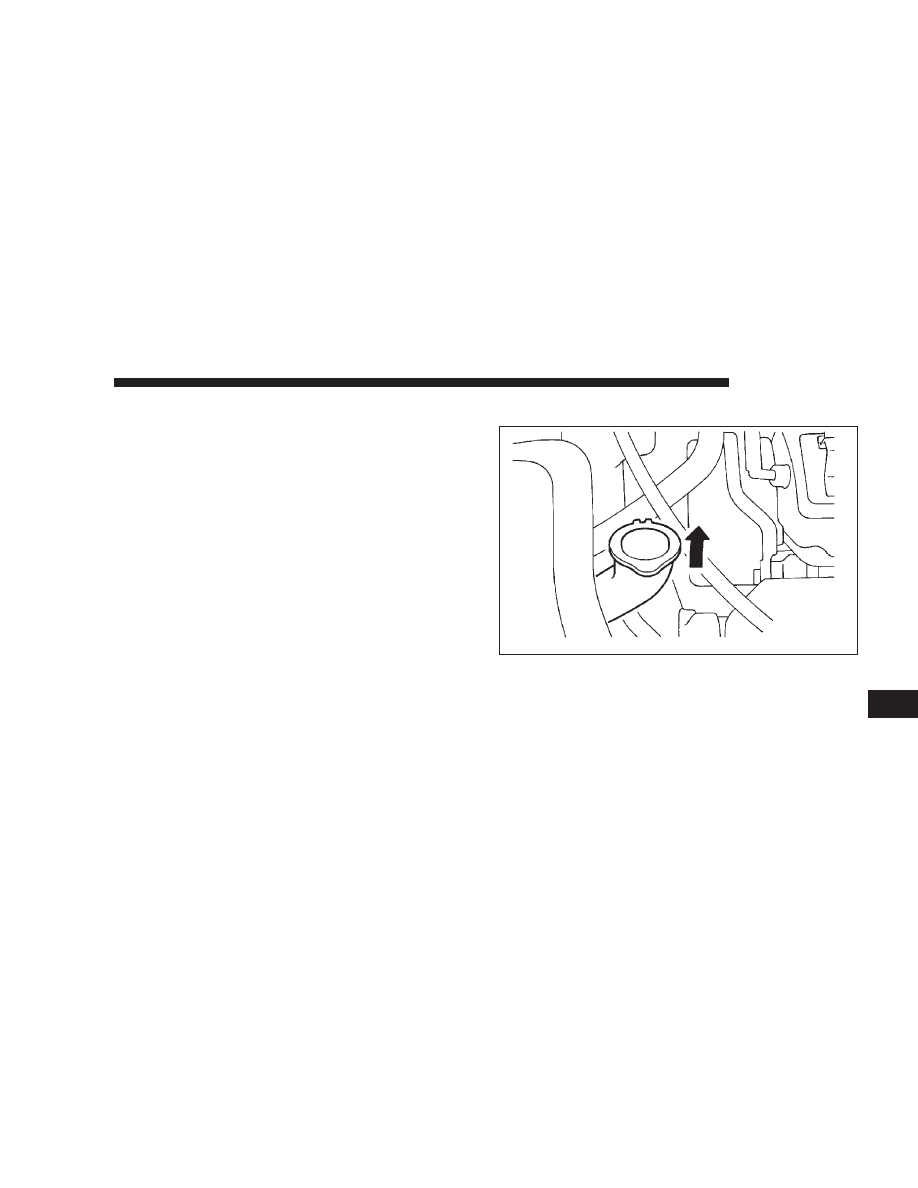Chrysler Sebring Coupe (2004 year). Manual - part 21

WINDSHIELD WIPER BLADES
Check the wiper blades occasionally. Periodic cleaning of
the wiper blades is suggested to remove the accumula-
tion of salt and road film. The wiper blade arms and glass
areas should be cleaned with a sponge or cloth and a
mild detergent or non-abrasive cleaner.
If the blades continue to streak or smear, they should be
replaced.
NOTE
: Do not operate wipers for long periods on dry
glass; this accelerates deterioration of the rubber and
could scratch the glass.
Windshield washers
The windshield washer reservoir is in the engine com-
partment. Check the fluid level at regular intervals and
replenish the fluid if necessary.
NOTE
: When freezing weather is anticipated flush out
the water in the reservoir by operating the pump. Fill the
reservoir with windshield antifreeze (not radiator anti-
freeze) and operate the system for a few seconds to flush
out any residual water.
M31A0730
MAINTENANCE
325
9